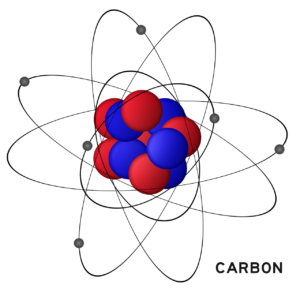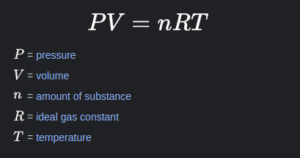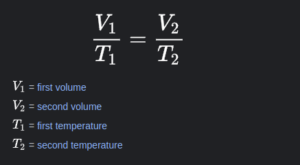Boyle’s Law | Definition, Equation, Applications, Facts, & Limitations
Boyle’s Law, named after the Irish physicist Robert Boyle, is a fundamental principle in the field of gas physics. This law describes the relationship between the pressure and volume of a gas at constant temperature. Boyle’s Law is a key component of the broader field of thermodynamics, providing valuable insights into the behavior of gases under different conditions. In this comprehensive exploration, we will delve into the definition, equation, limitations, and interesting facts surrounding Boyle’s Law.
Definition of Boyle’s Law
Boyle’s Law states that, at constant temperature, the pressure of a given amount of gas is inversely proportional to its volume. In simpler terms, as the volume of a gas increases, the pressure it exerts decreases, and vice versa, provided that the temperature remains constant.
This law can be expressed mathematically as:
P ⋅ V = constant
where:
- P represents the pressure of the gas,
- V represents the volume of the gas.
In other words, the product of the pressure and volume of a gas is constant at constant temperature. This mathematical relationship can be rearranged to express the direct proportionality between pressure and the inverse of volume:
P ∝ V1
This relationship is essential in understanding how gases behave under changing conditions and is particularly useful in practical applications, such as in the design and operation of various systems involving gases.
The Equation and Its Implications
Boyle’s Law is best illustrated through experimentation and graphical representation. By conducting experiments in which the volume of a gas is altered while keeping the temperature constant, one can observe the corresponding changes in pressure. The data collected can then be used to create a graph that demonstrates the inverse relationship between pressure and volume.
The equation P ⋅ V = constant implies that when the volume of a gas decreases, the pressure increases proportionally, and when the volume increases, the pressure decreases proportionally. This relationship can be visualized using a pressure-volume (PV) diagram, where the product of pressure and volume is constant for different states of the gas.
Limitations of Boyle’s Law
While Boyle’s Law is a valuable tool for understanding the behavior of gases under specific conditions, it is essential to acknowledge its limitations. The law assumes that the temperature remains constant throughout the process. In real-world scenarios, temperature fluctuations are common, and when they occur, Boyle’s Law may not accurately predict the relationship between pressure and volume.
Additionally, Boyle’s Law is strictly applicable to ideal gases. Ideal gases are theoretical entities that follow the assumptions of perfect behavior, including negligible volume of gas particles and no intermolecular forces. Real gases deviate from ideal behavior, especially at high pressures and low temperatures. Under such conditions, the assumptions made by Boyle’s Law may not hold, and corrections or alternative models may be necessary.
Facts about Boyle’s Law
- Historical Context: Boyle’s Law was first published by Robert Boyle in 1662 in his work titled “New Experiments Physico-Mechanical, Touching the Spring of the Air and Its Effects.” Boyle conducted various experiments with a J-shaped tube filled with mercury and noted the inverse relationship between pressure and volume.
- Pressure-Volume Diagram: The relationship described by Boyle’s Law can be visually represented using a pressure-volume diagram. In this diagram, pressure is plotted on the y-axis, and volume is plotted on the x-axis. The resulting graph is a hyperbola, emphasizing the inverse proportionality between pressure and volume.
- Inversely Proportional: Boyle’s Law is often referred to as the principle of inverse proportionality because it demonstrates how changes in one variable (pressure or volume) result in opposite changes in the other variable. This is a fundamental concept in physics and mathematics.
- Application in Diving: Boyle’s Law has practical implications in scuba diving. As divers descend into deeper water, the pressure increases, causing the volume of air in their lungs to decrease. Understanding Boyle’s Law helps divers avoid complications such as barotrauma, where changes in pressure affect the volume of air spaces in the body.
- Critical Point: At a certain point, known as the critical point, real gases undergo a phase transition, and their behavior deviates significantly from that predicted by Boyle’s Law. The critical point is characterized by specific values of temperature and pressure beyond which the distinction between gas and liquid becomes less apparent.
- Temperature and Boyle’s Law: As mentioned earlier, Boyle’s Law assumes constant temperature. If the temperature of a gas changes, the relationship between pressure and volume may not follow the predictions of the law. This highlights the importance of considering temperature in gas laws.
- Boyle’s Law in Everyday Life: Many everyday experiences can be explained by Boyle’s Law. For example, the inflation of a balloon involves increasing the volume of air inside it, which leads to a rise in pressure. Conversely, squeezing a plastic bottle reduces its volume and increases the pressure inside.
- Mathematical Interpretation: Boyle’s Law is not only a conceptual understanding but also a mathematical expression. The constant in the equation P ⋅ V = constant is crucial in illustrating the consistent relationship between pressure and volume.
Applications of Boyle’s Law
Boyle’s Law finds applications in various fields, ranging from everyday activities to industrial processes. Some notable applications include:
- Automotive Industry: Understanding the principles of Boyle’s Law is essential in designing and optimizing the performance of internal combustion engines. Changes in volume and pressure within the engine cylinders are critical factors in achieving efficient fuel combustion.
- Medical Field: Boyle’s Law plays a vital role in medical applications, particularly in respiratory physiology. The functioning of the human lungs and the exchange of gases during breathing can be explained and understood through the principles of Boyle’s Law.
- Chemical Industry: Many industrial processes involve gases, and Boyle’s Law is integral to the design and operation of systems that handle these gases. From the production of chemicals to the operation of pneumatic systems, Boyle’s Law informs engineers and scientists about the behavior of gases under different conditions.
- Aviation: Boyle’s Law is relevant in aviation, where changes in altitude result in variations in atmospheric pressure. Pilots and aircraft engineers use an understanding of Boyle’s Law to address issues related to cabin pressure, especially during ascent and descent.
- Weather Balloons: The behavior of gases in weather balloons is influenced by Boyle’s Law. As a weather balloon ascends through the atmosphere, the decrease in atmospheric pressure causes the balloon to expand, providing valuable data for meteorological observations.
- Laboratory Experiments: In laboratories, Boyle’s Law is often employed in experiments that involve gases. Researchers and students use this law to predict and analyze the behavior of gases under controlled conditions.
Conclusion
Boyle’s Law stands as a cornerstone in the understanding of gas behavior, providing valuable insights into the relationship between pressure and volume. Its historical significance, mathematical representation, limitations, and practical applications make it a crucial concept in the fields of physics, chemistry, and engineering.
As we continue to explore and expand our knowledge of the physical world, Boyle’s Law remains a foundational principle, guiding our understanding of gas behaviour and influencing a wide range of applications in both scientific research and everyday life.





